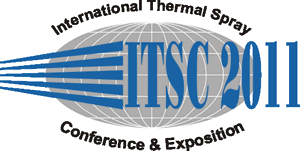
|
2829 |
|
Wednesday, September 28, 2011, Saal B2.2 4:25 PM Process Diagnostics, Sensors & Controls 1 |
|
Investigation and comparison of particle parameters determined with spraywatch and LDA (laser doppler anemometry) during the cold gas spraying process |
|
Stephan Zimmermann / University of the Federal Armed Forces Munich, Germany Jochen Tewes* / MTU Aero Engines GmbH, Coating Engineering (TAFS), Germany Manuel Hertter/ MTU Aero Engines GmbH, Coating Engineering (TAFS), Germany Heinz Voggenreiter/ Deutsches Zentrum für Luft- und Raumfahrt e.V., Institut für Bauweisen-und Konstruktionsforschung , Germany Tim Biermordt/ Universität der Bundeswehr München, Institut EIT1, IPM (LPT), Germany Martin Heinrich/ Universität der Bundeswehr München, Institut EIT1, IPM (LPT), Germany Klaus Landes/ Universität der Bundeswehr München, Institut EIT1, IPM (LPT), Germany Jochen Schein/ Universität der Bundeswehr München, Institut EIT1, IPM (LPT), Germany |
|
Coatings produced by cold gas spraying process are determined by particle parameters, which can be investigated using various diagnostic systems. With the commercial SprayWatch system four (velocity, temperature, size, number density) particle parameters can be measured and evaluated. In comparison the LDA (Laser Doppler Anemometry) system determines velocity and number density. Using both systems the velocity has been measured for a range of parameters, including different materials, different gas pressures and nozzles thus offering the possibility to compare the two different diagnostic systems. This paper begins with an explanation of the two measurement method of particle diagnostic systems. In a second part of this paper different contour plots of velocity and number density are shown. The interpretation of the measurement results is used for the calculation and the estimation of a correction factor between two different systems for the cold gas spraying process in the main part of the paper. An investigation of coating results, suggestions for error analysis and an outlook for future work will finish the paper. |